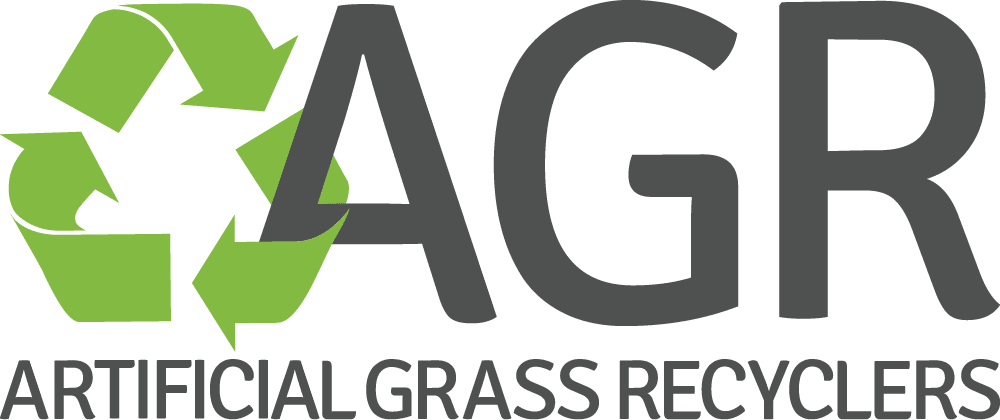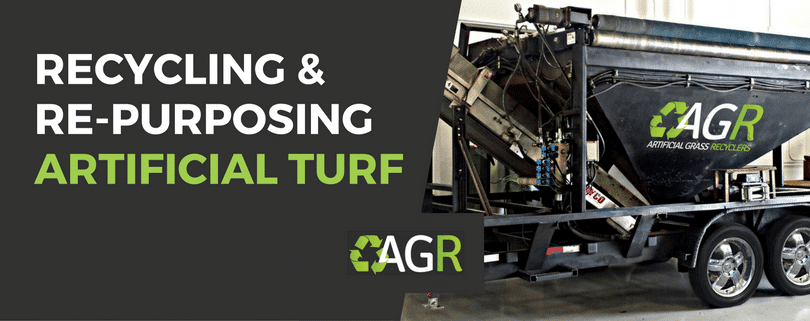Artificial grass offers a wealth of benefits for sports facilities, business owners, and homeowners alike. But can artificial turf be recycled?
Pollution is the leading cause of environmental degradation, health hazards, and depletion of the ozone layer.
The increase in the manufacturing of plastic, paper, and metal products has increased the amount of pollution littering the planet each year.
This dangerously advancing number has called for a spike in the recycling industry, which hopes to decrease pollution and increase environmental awareness. This need for advancement in the recycling industry has greatly increased our recycling options, making it possible to recycle almost anything. However, the recycling process varies greatly by product, and this includes artificial turf.
Where Artificial Turf Got its Start
Artificial turf was created in the late 1950’s by a small sector of Chemstrand called The Creative Group. The artificial lawn product was effectively called “Chemgrass” during its first distribution. While the first large application of the artificial grass was seen at a public school in Providence, Rhode Island, the tables turned quickly to suit the needs of the sporting industry, starting first with baseball.
In fact, the need for the widespread manufacturing of artificial turf was started by the Houston Astros, who were originally playing on dead grass and dry dirt in the Astrodome, which was painted green for aesthetic purposes. This began the widespread distribution of Astroturf in the baseball industry. While the product was refined and recreated by many different companies, the main idea stayed the same- to provide a sturdy, functional ground covering that is appealing to the eye, easy on the wallet and to play on.
The Growing Reason for Recycling Options
Over the last decade, artificial turf has become an increasingly popular option for sports stadiums, public spaces, and residential consumers alike. This is due to the many benefits accompanying the use of artificial grass. Consumers may choose this turf option in areas that experience drought to reduce water usage. Other consumers are interested in lowering maintenance requirements and upkeep as compared to growing natural grass. Both of these options help consumers save money, which further increases the popularity of the artificial grass. Other buyers may prefer artificial turf over real grass due to its aesthetic properties.
Artificial Turf: How It’s Made
Like many products in our advancing industrial age, artificial grass is made up of an array of varying raw materials. The backing material for the artificial grass sections is often made from materials such as plastic, polyester, or nylon. It can be made of almost anything that can be used for carpet backing, including rubber material. The components used to create the grass blades also varies greatly and includes synthetic materials such as polypropylene, polyethylene, and nylon. Polypropylene and polyethylene are plastic materials often used in a multitude of common products, such as food packaging and labeling and various textile productions. The materials are blended with appropriate dyes in order to reach the desired color and aesthetic appeal of grass.
The varying raw materials and dyes are blended together and pulled into yarn-like strands. The strands are then heated and twisted, giving them a look that is more similar to natural grass. They are then pulled and looped through the backing material in order to create a realistic grass-like pattern that is both durable and safe to the touch. The manufacturing process of artificial turf is similar to the manufacturing process of carpet.
Can Artificial Grass Be Recycled?
In short, it is possible to recycle artificial grass. However, the mix of materials used when manufacturing artificial turf creates some difficulty during the recycling process. This is why specialized companies exist who specialize in recycling used artificial grass.
In order to recycle this product successfully, the different component materials have to be chemically separated. When the materials are separated, they are then made into different plastic products and similar products such as rugs and carpets. Because of the complex recycling process, special equipment is necessary to recycle artificial turf, therefore the number of companies who specialize in this recycling process is limited, making recycling options limited to consumers as well.
However, used artificial grass can serve a different purpose. Often, because of the difficulties of the recycling process, artificial grass is repurposed or reused.
Repurposing Artificial Grass
We created a way to refurbish artificial grass which has helped to lower waste and pollution, as well as the need for the industrial recycling of the product. This refurbished grass is available at discount prices, which is great for covering yards, sports fields, and public spaces alike. This offers both residential and commercial consumers an opportunity to experience the benefits of artificial turf at a much lower cost, sometimes at as much as an 80% discount on the original prices of artificial turf.
In other cases, used artificial turf is repurposed to make various unrelated products such as interior decorations and art.
Installing Artificial Grass in Your Yard
In order to prepare for the installation of artificial turf, you must first level the area and install high capacity drainage systems. The artificial turf will show uneven areas and will not allow the foundation to absorb water, which will cause an issue if an adequate drainage system is not properly installed. Drainage systems are especially important for applications in large areas or where sports will be played.
The turf sections are then applied to the foundation. After applying the artificial turf, you have two options: filled or unfilled turf. Filling the turf involves pouring a filling material over the top of the turf, which can help provide stability for the grass blades and give a sturdiness to the ground below, making the artificial turf feel much more like real grass that is planted in soil. This filling, referred to as infill, can be made of a variety of materials, such as cork, sand, rubber, soil, or a mixture of these materials. However, the filling may degrade or wash away over time and need to be replaced.
Conclusion
If you are concerned about the environment and want to install artificial grass in your backyard – purchase recycled and repurposed artificial grass. It can last up to ten years and will a stunning addition to your beautiful home.



